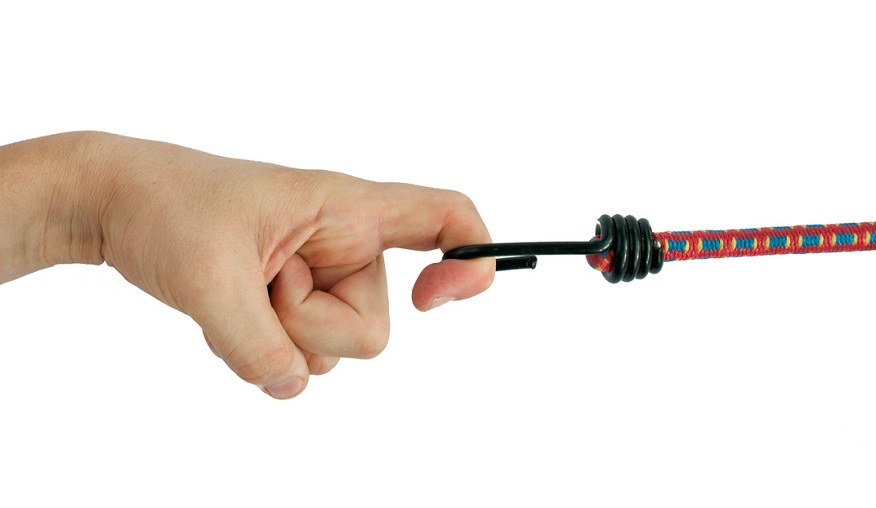The history of the bungee cord dates back hundreds of years ago to 16th-century Vanuatu and the native tradition of vine jumping. What we now know is the modern bungee cord was invented in the 1970s. Although bungee cords remain popular in American culture, I no longer buy them. I prefer webbing straps first, and rope second.
There are very few things I could do with bungee cords that are impossible with rope or webbing straps. Between the two alternatives, I can accomplish everything I would otherwise accomplish with a bungee cord. No, I don’t go jumping off bridges. So I really have no need for bungee cords.
Why am I so anti-bungee? Here is the #1 reason I no longer spend my money on them: loss of elasticity. Over time, bungee cords just stop working the way they were designed to. I never have that problem with webbing straps or rope.
The Modern Bungee Cord
Although the earliest bungee cords were made of spongy, elastic vines, modern bungee cords are generally made out of synthetic rubber. You can also find them made with natural rubber, but they are more expensive. Synthetic rubber does just as good a job but at a much lower price.
Modern bungee cords are typically manufactured according to two designs. The first design is solid rubber. Solid rubber bungee cords are black. They look like strips of rubber with metal ‘S’ hooks at either end. That is essentially what they are.
The second design relies on a group of narrow-diameter rubber ropes that are twisted together and then covered in some sort of fabric – usually nylon. Twisted metal hooks are affixed to the two ends.
They Won’t Stretch Forever
Bungee cords are designed to stretch. As with anything that stretches, a cord wants to return to its natural state. It actually pulls back against the stretching force, which is what allows a bungee cord to hold something in place. The problem is that most bungee cords will not stretch forever.
With each use, the rubber undergoes a bit of stress. If stretched to the limit, the stress can be too much. Over time, the court is likely to lose its elasticity thanks to a weakened elastic core. In addition, UV light exposure and other environmental conditions can speed up the degradation process. You almost cannot stop the natural deterioration of a bungee cord’s core.
Webbing Straps Don’t Stretch
Because I am not a big fan of loss of elasticity, my preferred choice for securing any kind of load is a webbing strap. Most of the time a Rollercam cam strap does the job. It is a webbing strap with a cam buckle on the end. If I’m carrying an especially heavy load where I’m driving long distances, I might choose a ratchet strap instead. It is the same kind of thing except the strap has a ratchet rather than a cam buckle.
There are certain applications for which a webbing strap seems like overkill. That is why I still keep ropes in the shed. Ropes can stretch over time as well – especially if they are synthetic – but even being stretched to their full limit, they are still useful as long as they aren’t frayed or damaged in some other way.
I get the fact that people still love bungee cords. More power to them. If I engage in certain sorts of activities, I might be inclined to continue using them myself. But at this point, I don’t think I’ll ever buy another bungee cord again. I’m happy with my webbing straps and old-fashioned rope.





